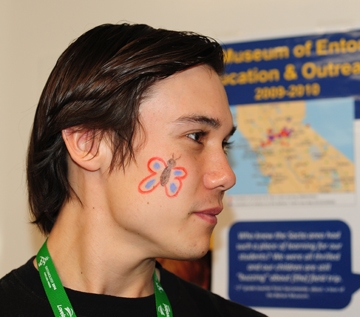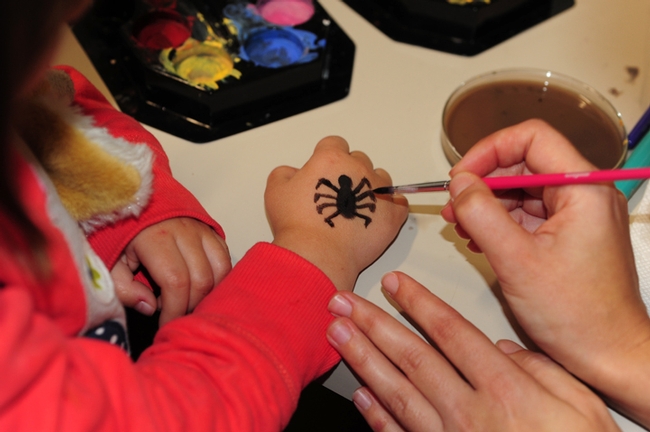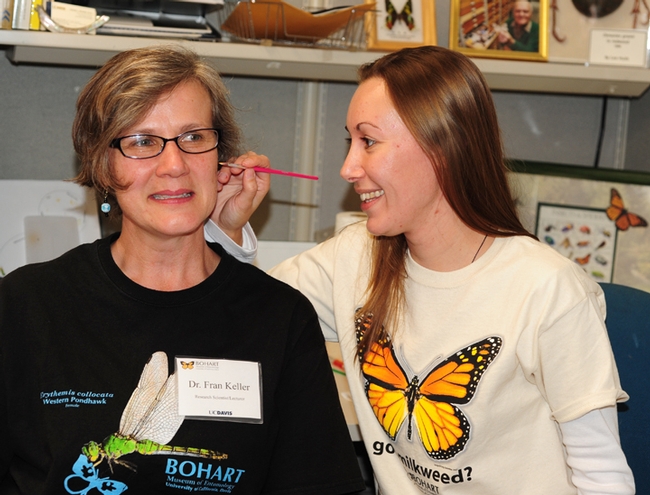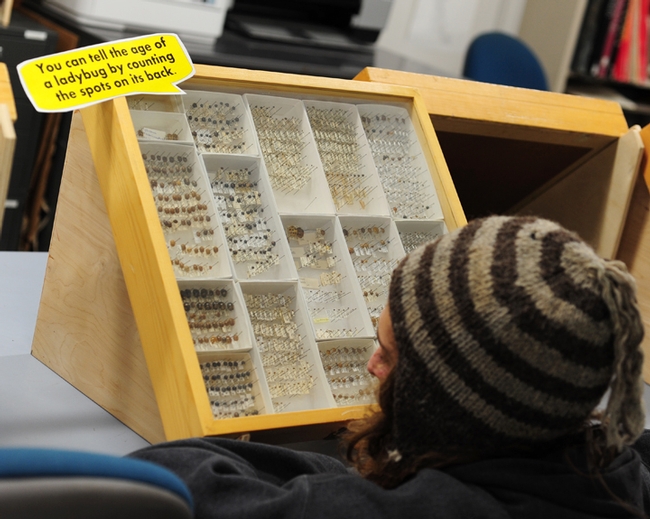
It was a fun and educational afternoon when the UC Davis Bohart Museum of Entomology hosted an open house last Sunday.
Visitors checked out the displays, asked the entomologists and staff questions, and looked over the list of myths.
Yes, there are a lot of myths.
We'll share! (Ask the person next to you if he/she can answer them. No fair peeking at the answers)
1. Butterflies and moths can't fly if you rub the scales of their wings.
Answer: Not true, they can fly.
2. Black widow females eat the males after mating.
Answer: Only if the male isn't fast enough.
3. Chiggers burrow under your skin and suck your blood.
Answer: False. Chiggers simply feed and leave, like mosquitoes.
4. Brown recluse spiders are common in California, biting many people.
Answer: Brown recluse spiders are not found anywhere near California.
5. Ultrasonic devices help keep pests out of your kitchen.
Answer. False. Few insects can hear, certainly not cockroaches.
6. Camel spiders scream like babes, inject toxins and prey on GI's in Iraq.
Answer: Not true at any level.
7. Mosquitoes transmit HIV.
Answer: They cannot transmit HIV under any circumstances.
8. Earwigs crawl into your ear and lay eggs in your brain.
Answer. They sometime do crawl in ears by accident, but do not lay eggs.
9. Bedbugs bore, burrow, dig and fly.
Answer: No, they can only walk or scurry.
10. Insects don't feel pain.
Answer: Probably true; their nervous systems are too limited, any injury would probably kill them.
11. It is illegal to catch preying mantids and monarchs.
Answer: There are no laws against this.
12. Twenty-five percent of the protein in our diet is from swallowing spiders that crawl in our mouths at night.
Answer: This never happens.
13. Love bugs that plague the southeastern United States are the result of government experiments.
Answer: No, Mother Nature came up with this.
14. Ten percent of the weight of your pillow is house dust mites.
Answer: False. House dust mites are found only in coastal southeastern United States.
15. All bees die after stinging.
Answer: False. Only worker honey bees die after stinging.
16. Ticks must be removed by rotating them clockwise.
Answer: False. Just pull the tick straight out.
17. "Daddy long legs" are deadly, but their jaws are too small to bite humans.
Answer: False. Daddy long spiders, Pholcus phalangioides, also commonly called “cellar spiders,” have venom glands but relatively weak venom. "Daddy long legs" is a common name but not all are P. phalangioides.
18. Copper pennies cure bee stings.
Answer. No, it just doesn't work.
The Bohart Museum of Entomology, directed by Lynn Kimsey, professor of entomology, is open to the public Mondays through Thursdays (except holidays). It is located in Room 1124 of the Academic Surge Building on Crocker Lane (corner of LaRue and Crocker). It is home to nearly eight million insect specimens, plus a live "petting zoo" (think Madagascar hissing cockroaches, walking sticks and tarantulas) and a year-around gift shop filled with T-shirts, jewelry, insect collecting equipment, posters, books and insect-themed candy.
Attached Images:

The beginning of a black widow spider tattoo, compliments of entomology Jessica Gillung of the Bohart. (Photo by Kathy Keatley Garvey)

Entomologist Fran Keller, who received her doctorate from UC Davis, smiles as student Jessica Gillung asks her which insect she wants. (Photo by Kathy Keatley Garvey)

A youth looking at a ladybug display. The premise, "You can tell the age of a ladybug by counting its spots, is false. (Photo by Kathy Keatley Garvey)